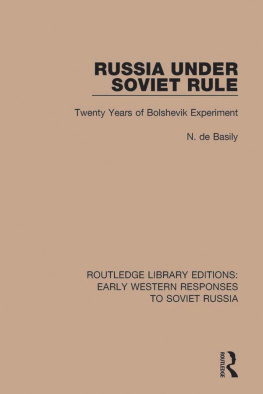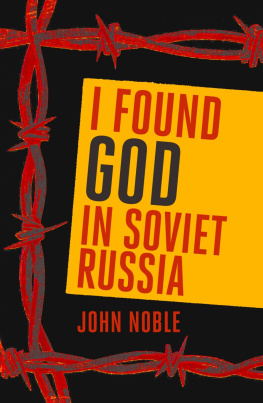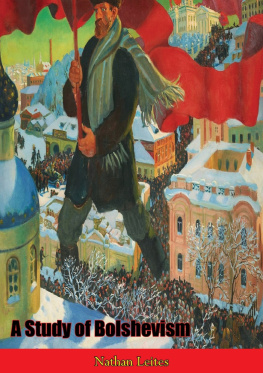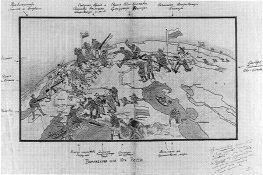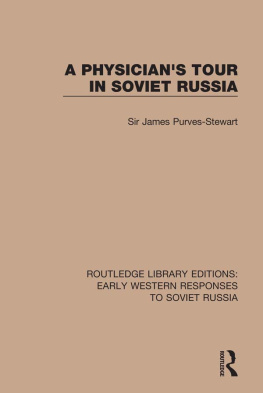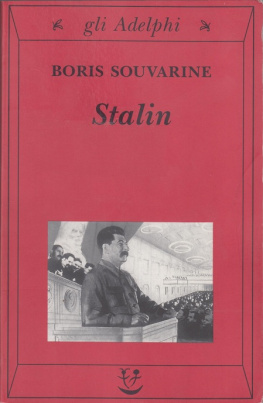

This edition is published by Muriwai Books www.pp-publishing.com
To join our mailing list for new titles or for issues with our books muriwaibooks@gmail.com
Or on Facebook
Text originally published in 1927 under the same title.
Muriwai Books 2017, all rights reserved. No part of this publication may be reproduced, stored in a retrieval system or transmitted by any means, electrical, mechanical or otherwise without the written permission of the copyright holder.
Publishers Note
Although in most cases we have retained the Authors original spelling and grammar to authentically reproduce the work of the Author and the original intent of such material, some additional notes and clarifications have been added for the modern readers benefit.
We have also made every effort to include all maps and illustrations of the original edition the limitations of formatting do not allow of including larger maps, we will upload as many of these maps as possible.
THE MIND AND FACE OF BOLSHEVISM
An Examination of Cultural Life in Soviet Russia
BY
REN FLP-MILLER
With a new Epilogue, Changes in Soviet Life and Culture During the Last Decades and a new Bibliography (1962)

TABLE OF CONTENTS
Contents
LIST OF ILLUSTRATIONS
Frontispiece: THE MASS
(The following illustrations will be found in a group following page 212.)
1. THE GIANT TOYS OF THE COLLECTIVE MAN: figures of Lloyd George, Millerand, Kerenski and Milinkov in front of the Kremlin.
2. Moscow: The Red Square before the Historical Museum, decorated.
3. THE MECHANIZED INDIVIDUAL IS REDUCED TO A MERE COMPONENT PART IN THE MASS WHICH HAS BECOME THE MACHINE. (Constructivistic-symbolical drawing by Krinski).
4. LET US TAKE THE STORM OF THE REVOLUTION IN SOVIET RUSSIA, UNITE IT TO THE PULSE OF AMERICAN LIFE, AND DO OUR WORK LIKE A CHRONOMETER! (Gastevs appeal for Americanization).
5. A TEMPLE OF THE MACHINE-WORSHIPPERS: A Byzantine Dome. Instead of angels, figures of Communist agitators have been placed in the spandrels (Drawing by Krinski).
6. PLAN FOR A MONUMENT TO THE COMMUNIST REVOLUTION: THE COLOSSUS OF IRON.
7. LENIN SPEAKING FROM A PLATFORM ON THE MOSCOW THEATRE SQUARE.
8. LENIN IN HIS STUDY.
9. LENIN, BUKHARIN AND ZINOVIEV, THE FOUNDERS OF BOLSHEVIK MARXISM.
10. FESTIVAL TO CELEBRATE THE FRATERNISATION BETWEEN WORKERS, PEASANTS AND SOLDIERS.
11. THE CENTRAL EXECUTIVE OF ALL THE RUSSIAN PROLETARIAT HOLDS A SESSION IN THE FORMER CORONATION ROOM OF THE MOSCOW KREMLIN.
12. TROTSKI IN HIS STUDY.
13. LEADERS OF SOVIET RUSSIA: Sokolnikov, Piatakov, Bukharin, Kamenev, Kurski.
14. LENINS FUNERAL.
15. STALIN AND KALININ.
16. PROPAGANDA CHINA PLATE FROM THE FORMER IMPERIAL FACTORY.
17. SUPREMATIST POTTERY FROM THE FORMER IMPERIAL POTTERY FACTORY.
18. BOLSHEVIK ISMS.
19. ARCHITECTURAL MODEL (by Ladovski).
20. IN A RED WORKERS CLUB. Performance of a play by Mayerhold, in which the political questions of the day are discussed.
21. STANISLAVSKI, TAIROV, CHEKHOV (a nephew of the writer), AND EVREINOV.
22. THE CONSTRUCTIVIST STAGE IN THE MAYERHOLD THEATRE.
23. A GROUP FROM A PROLETARIAN PROCESSION.
24. THE STORMING OF THE KREMLIN (drawing by Krinski).
25. LENIN ADDRESSES THE CROWD FROM THE FACTORY CHIMNEYS (drawing by Deni).
26. PART OF A GREAT PROCESSION OF INDUSTRY.
27. A WALKING EXHIBITION OF THE BOOK TRADE DURING AN INDUSTRIAL FESTIVAL.
28. THE MASS ON THE MARCH. (Radek, painting by Kupka).
29. GREAT SOVIET GYMNASTIC DISPLAY.
30. BIRDS EYE VIEW OF THE WINTER PALACE WITH THE ALEXANDER COLUMN.
31. THE THEATRICALISED STORMING OF THE WINTER PALACE.
32. PORTRAIT OF GORKI (by I. Annenkov).
33. PORTRAIT OF SAMIATION (by I. Annenkov)j
34 & 35. CONCERT OF FACTORY SIRENS AND STEAM WHISTLES.
36. THE PRIVATE CHAPEL OF THE TROITSKOE PODVORE (Church of the Trinity) TRANSFORMED INTO AN ATHEISTS CLUB.
37. THE CUPOLA OF A LENINGRAD CHURCH.
38. A COMMUNIST SPEAKER AMONG THE PEASANTS.
39. A COMMUNIST PARTY CONFERENCE.
40. INDESTRUCTIBLE SUPERSTITION IN RUSSIA.
41. COMMUNISTIC UNIVERSITY OF THE WESTERN PEOPLES IN MOSCOW READING ROOM.
42. A YOUNG HOUSEKEEPER, BEFORE SHOPPING, GOES WITH HER A B C TO THE SCHOOL FOR ILLITERATES.
43. SCHOOL FOR ILLITERATES.
44. EXTERIOR OF THE CENTRAL INSTITUTE FOR SCIENTIFIC RESEARCH INTO HUMAN LABOUR (GASTEV INSTITUTE).
45. CINE-PHOTOGRAPHY OF THE LABOUR PROCESS.
46. THE USPENSKI CATHEDRAL.
47. IN ALEXEI TOLSTOIS HOME: (from left to right) TIKHONOV, SCHIPATCHEV, TOLSTOI, TVARDOVSKY, ISAKOVSKY, SURKOV.
48. ILYA EHRENBURG ADDRESSING THE PEACE RALLY IN LONDONS TRAFALGAR SQUARE, 1950.
49. BORIS PASTERNAK AFTER HEARING OF HIS WINNING THE 1958 NOBEL PRIZE IN LITERATURE FOR Dr. Zhivago.
50. POET E. YEVTUSHENKO, 1962.
51. FORMER PREMIER KHRUSHCHEV AT TWO DAY MEETING IN KREMLINS SVERDLOVSK HALL, WITH (from left to right) FROL, KOSLOV, KHRUSHCHEV, S. MIKHALKOV, GEORGI CHUKHRAY AND PYRIEV.
52. WOODCUT OF VLADIMIR MAIAKOVSKI BY YURI MOGILEVSKY.
INTRODUCTION
HITHERTO Bolshevism has almost always been regarded purely as a political problem; to wrest it from this misleading and superficial judgment is the aim of this book. For what is happening in Russia today is far too significant and fateful for our age to be handed over for acceptance or rejection to a caste of politicians whose attitude and verdict depend entirely on tactical considerations, and who will emphasize or ignore both its defects and its merits as it suits their interest at the moment.
The problem of Bolshevism extends far beyond the narrow horizon of political sympathies or antipathies. Its acceptance or rejection is the rejection or acceptance of the whole of European culture. The claim made for Bolshevism is that it can immediately and without delay realize all the immemorial aims of human endeavour, all those things for which the thinkers of all times have striven, to which martyrs have testified by their example in life and in deathI mean, the redemption and happiness of mankind. Its doctrines offer not the vague hope of consolation in another and better world of the future, but precepts for the immediate and concrete realization of this better world.
Such a colossal claim demands more earnest consideration than is generally accorded to political and social reforms; but it also calls for more serious and conscientious criticism. No body of men has ever before had the audacity to try to give a practical demonstration of redemption, that never yet attained vision of the future; and no one who enters upon so bold an undertaking can expect to escape rigorous criticism.
The ordinary methods of objective criticism break down before the vastness of the subject, and it cannot be exhausted by political and economic abstractions. Bolshevism stands for a radical change of the whole of human life in all its fundamental aims and interests, in every one of its manifestations. But you cannot get to the heart of reality by impersonal theories, a dry array of facts, and an uncritical reproduction of expressions of opinion, pro and con . Only by experience can you obtain a truthful picture of men and their actions, words and ideas, and only a concrete representation of what has been experienced can communicate to others a true picture of living reality.
Next page

